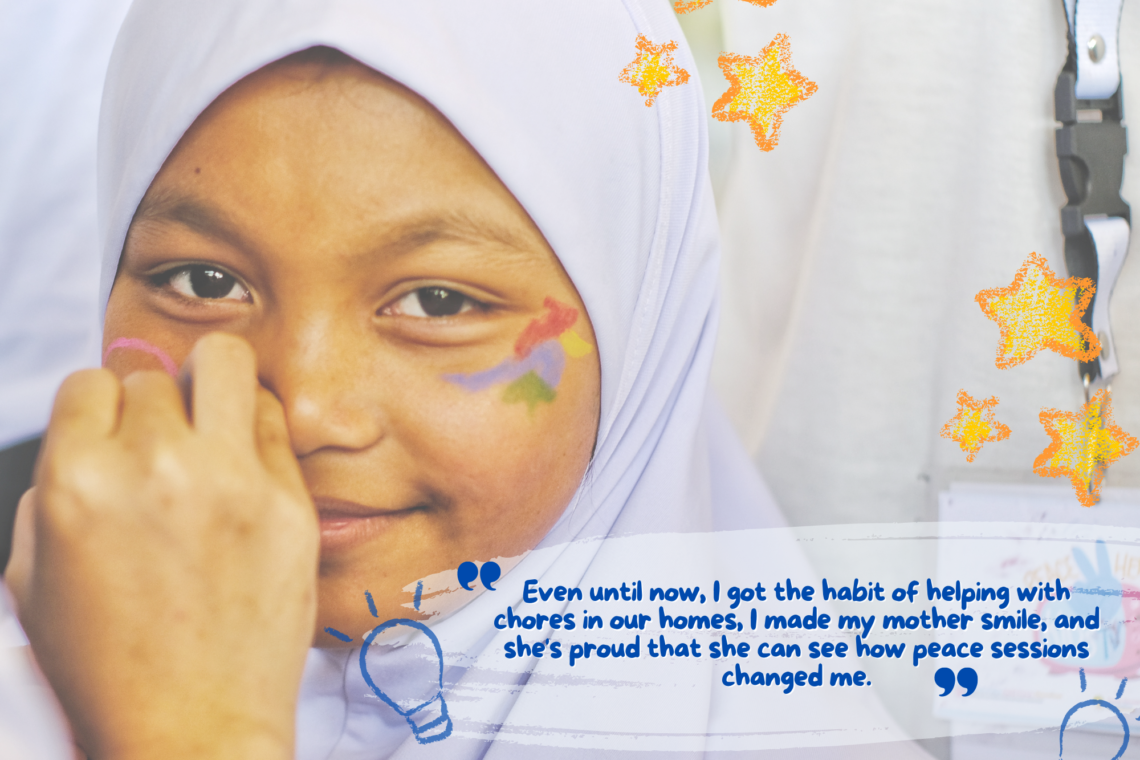The Peace Hero Kids and Artists for Peace from Barimbingan Ditsaan, Ramain are Yaslani or “Nusqa,” Ryan, Abdul Qahar or “Bitoy,” Ismail or “Maki,” Janary or “Jana,” and Norjanah or “Jiya. Barimbingan is a locality in Lanao del Sur and situated nearby to the localities Pagalungan and Marawi. These children and their families witnessed the Marawi Siege, were exposed to the persisting family feuds or Rido in their community, and were subject to bullying in their schools.
Although the Marawi Siege happened six years ago, these children can still recall the simultaneous explosion of bombs and the exchange of gunfire. It negatively impacted both their way of life and their academic performance, being accustomed to the blasts as they occur every day for a month.
“It was so loud and scary at first, but for the past months of siege, it’s like we learn how those blasts became normal to us. We take it like a firework for us not to be shocked. But I can’t forget the struggle of my parents to buy our food to eat at that time. They told us that prices are high even in Ramain; people from Marawi buy foods in their place to survive the day.”
– Nusqa
Children are regarded as one of the most vulnerable groups in any armed conflict situation. Like youth, children can become passive victims or violent offenders because of misguidance. There are numerous stories of the Marawi Siege wherein children between the ages of 7 and 12 express interest in joining ISIS or the ISIS-inspired group because they were exposed to violence. Therefore, it is essential to offer these children the necessary intervention so they will realize their potential for nonviolence and peace. This backs up Erik Erikson’s psychosocial development theory that children are already searching for their sense of self and personal identity, purpose, and sense of belongingness between the ages of 12 and 19 through an intense exploration of personal values, beliefs, and goals.
Teach Peace Build Peace Movement (TPBPM) strongly believe in the importance of teaching peace in a child’s formative years, and by introducing the peace hero principle and the role of the arts in engaging their young minds in peacebuilding. These teachings can help develop their inner peace. Also, by managing negative emotions and their struggles, they will be equipped to build peaceful relationships amidst conflict in their environment.
Although I am just five years old, I can’t forget how our life was so difficult at that time; we had to secure our food for weeks because we were not sure where to get any more since people from other areas were buying here in Barimbingan.”
– Jannah
Before joining Peace Hero Kids Ambassadors Program and Artist for Peace Mentoring Sessions, the Barimbingan children regarded themselves as lacking awareness of the importance of peace in their lives. They mentioned the presence of bullying situations in their school wherein some initiated fights and some were victims. This is worrisome for most children as bullying can lead to Rido. As parents or family members of both ‘victims’ involve themselves in the bullying situations of their children, they tend to become hostile toward each other.
Since the neighborhood in Barimbingan is all in the same family line of relatives, some parents bypass the teachers and school administrator in reporting bullying incidents and will go directly to the family.
“Before, my parents took it personally and had a grudge against my classmate’s family because of a fight. In our minds, we know we can reconcile as kids, but when our parents discover that we are involved in a fight, it can lead to conflict between adults.”
– Bitoy
The lessons about conflict resolution and managing emotions helped Barimbingan children understand that bullying and the siege can be prevented. They learned that conflicts are not something you ignore or be indifferent to as they can do something to avoid violent conflict – like being a role model to fellow children, forming peaceful habits, and helping their household. Their learning gave them a sense of responsibility that paved the way for kids to build their self-esteem. Being responsible builds independence, which grows because of making choices, getting help with daily routines, and gaining control over their own life (Zoromski, 2017).
“Even until now, I got the habit of helping with chores in our homes, I made my mother smile, and she’s proud that she can see how peace sessions changed me.”
As these children learned about peace heroism, they now posit that bullying is a harmful act that mistreats others and promotes violence. They have realized that it must be stopped and resort to reconciliation should bullying happen again to them or other kids. As Peace Hero Kid Ambassadors, they have understood a peaceful and positive response to conflict.
In summary, the Barimbingan children were exposed to the violent conflict before the Marawi Siege. As these conflicts become part of their “normal” environment, there is a higher probability of becoming perpetrators in their adult life. Human interaction inevitably involves conflict, which we may experience at a young age, such as in the case of Barimbingan children. Disputes in a community or at a school involve disagreements, arguments, and physical violence; thus, children should start learning how to handle conflict. The earlier they can manage it, the sooner they can cultivate a strong self-awareness.
Instilling the peace hero principle and showing the role of art in building a Culture of Peace, our Barimbingan children understand the importance of non-violence to themselves and their community. Allowing children to have a sense of responsibility and introducing peaceful habits can redirect them to safe spaces and violent extremist ideologies.


